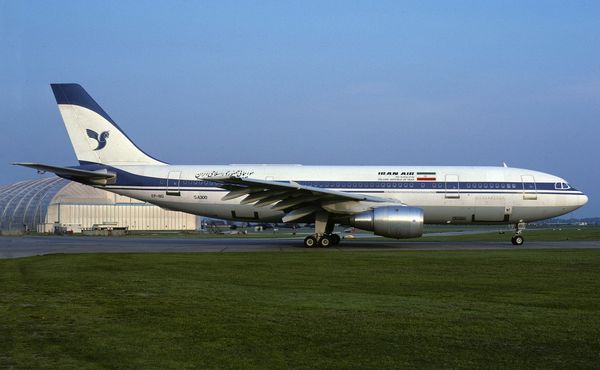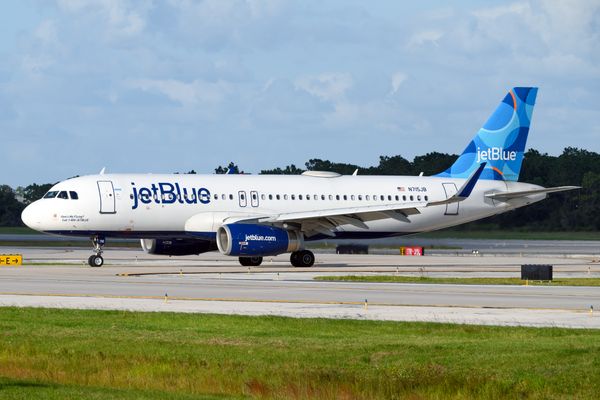Etihad Airways, the national airline of the United Arab Emirates (UAE), celebrated the renaming of Abu Dhabi International Airport to Zayed International Airport (AUH) on February 9. The airport is named after the UAE's founder, the late Sheikh Zayed bin Sultan Al Nahyan.

Terminal A, Etihad's New State-of-the-Art Home Terminal
The airport was renamed three months after Terminal A opened on November 1. The airline's new state-of-the-art terminal aims to expand passenger capacity and reinforce Abu Dhabi's overall standing as a global aviation hub. Arik De, Etihad's Chief Revenue and Commercial Officer, said about the renamed airport:
"We take immense pride in our home, Abu Dhabi, which is the perfect hub from which to explore the world. We're forever grateful to the vision of the UAE's Founding Father, the late Sheikh Zayed bin Sultan Al Nahyan, and proudly join in these celebrations as our home airport is renamed in his honor."
Etihad created a special offer for guests departing from Abu Dhabi to select destinations to celebrate Zayed International Airport. The offer occurs from February 9 to 14 for travel between February 19 and June 15. The promotion includes flights to the following destinations:
- Bangkok (BKK): AED 2,490 ($678) in economy class and AED 7,990 ($2,121) in business class
- Osaka-Kansai (KIX): AED 4,490 ($1,222) in economy class and AED 14,990 ($4,081) in business class
.jpg)
Activities and Functions
Designed by Kohn Pederson Fox, the X-shaped structure includes a 50-meter space for the departures hall and its own lighting system in line with the UAE's sustainability targets. The airport features energy-efficient, sustainable elements for heating, ventilation, air-conditioning, and lightning. Solar photovoltaic (PV) system installed within the airport saves approximately 5,300 tonnes of carbon dioxide annually and aims to reduce water consumption by 45%. The four lengths of the X-shaped airport are themed to Abu Dhabi's desert, sea, city, and oasis natural landscapes and now host celebrations of the renaming.
Over the weekend of the renaming celebration, guests will be welcomed with gifts, special activities, and live entertainment at Zayed International Airport, as stated on the airline's official website.

The passenger experience is elevated to a premium level in Terminal A. The various services are set through every part of the terminal. The terminal is the first to utilize all nine biometric airport touchpoints. Biometric solutions are installed in crucial areas, such as self-service bag drops, immigration e-gates, and boarding gates.
After installations were done and everything was fully operational, it was possible to minimize the waiting times overall and elevate the passenger experience. The facility also includes a baggage handling department that can process up to 19,200 bags per hour. It was also necessary to make transportation simpler and more functional. Therefore, the parking stands have increased to 65, creating connections between the aircraft and boarding gates.

The premium Business and First Class Lounges are accessible to guests flying in Etihad's The Residence, First and Business Class, and Etihad Guests with eligible tier status. Guests flying on Economy who wish to spend time in the exclusive lounge may purchase access based on space availability.
The renaming of Abu Dhabi International Airport to Zayed International Airport honors the legacy of Sheikh Zayed bin Sultan al Nahyan. This renaming coincides with the recent opening of Terminal A, a testament to Abu Dhabis's global aviation hub status. It is a milestone for Etihad Airways and the UAE's aviation sector.
My Unexpectedly Cheap Last-Minute Getaway with JetBlue Airlines » Air Premia Confirms Washington D.C. as Next American Destination » Mixed Signals: The Tragic Story of Iran Air Flight 655 »
Comments (0)
Add Your Comment
SHARE
TAGS
NEWS Etihad Airways Abu Dhabi United Arab Emirates UAE Airport SustainabilityRECENTLY PUBLISHED
 Essential Legal Tips for Tourists Chartering a Yacht in Dubai
Discover how yacht rentals in Dubai are regulated and learn what every tourist should know about contracts, insurance, and taxes before setting sail.
TRIP REPORTS
READ MORE »
Essential Legal Tips for Tourists Chartering a Yacht in Dubai
Discover how yacht rentals in Dubai are regulated and learn what every tourist should know about contracts, insurance, and taxes before setting sail.
TRIP REPORTS
READ MORE »
 Mixed Signals: The Tragic Story of Iran Air Flight 655
What would have otherwise been a routine passenger flight across the Strait of Hormuz culminated in a heartbreaking tragedy, all because of a costly system misunderstanding by an external party. This is the tragic story of Iran Air Flight 655.
STORIES
READ MORE »
Mixed Signals: The Tragic Story of Iran Air Flight 655
What would have otherwise been a routine passenger flight across the Strait of Hormuz culminated in a heartbreaking tragedy, all because of a costly system misunderstanding by an external party. This is the tragic story of Iran Air Flight 655.
STORIES
READ MORE »
 My Unexpectedly Cheap Last-Minute Getaway with JetBlue Airlines
My name is Daniel Moreno. I live in Tampa, Florida, and I work as a logistics coordinator at a small distribution company. I had to book a JetBlue Airlines flight at the last minute. I was sure the price would be high because that’s usually what happens with late bookings within the United States. But the final cost surprised me — the ticket was much cheaper than I expected.
TRIP REPORTS
READ MORE »
My Unexpectedly Cheap Last-Minute Getaway with JetBlue Airlines
My name is Daniel Moreno. I live in Tampa, Florida, and I work as a logistics coordinator at a small distribution company. I had to book a JetBlue Airlines flight at the last minute. I was sure the price would be high because that’s usually what happens with late bookings within the United States. But the final cost surprised me — the ticket was much cheaper than I expected.
TRIP REPORTS
READ MORE »



